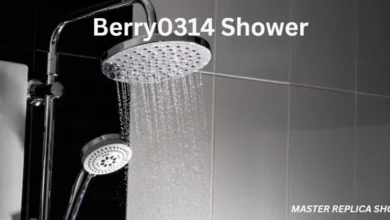A Guide to Using Extension Cords Safely and Efficiently

Extension cords are the best things that have been invented because they supply electricity to places where the power outlet is not. However, one needs to handle them carefully, as their mishandling can lead to electrical hazards.
Learning how to work with extension cords carefully and fluently is key to the effectiveness of both residential and commercial buildings. This step-by-step guide aims to offer useful information on choosing the appropriate cord, checking it for safety, and using it safely.
These guidelines help users avoid accidents, reduce fire chances, and extend the longevity of their electrical devices. Regardless of whether the extension cords are used indoors or outside, attention to detail, like the load capacity, placement, and maintenance, is required.
1. Choose the Right Extension Cord
When it comes to finding the best extension cord, you need to find the one that is the right match for both safety and efficiency purposes. Consider the following factors:
- Indoor vs. Outdoor Use: Use extension cords that are explicitly designed for indoor or outdoor use, based on the intended application. Unlike indoor cords made for indoor use, outdoor cords are made to withstand contact with moisture, sunlight, and temperature variations.
- Length and Gauge: Thicker wires with lower gauges have a larger cross-sectional area, which enables them to carry more current without becoming overheated. Make sure that no extra lengths are left as voltage drops are prone to occur on cords that are too long, leading to performance issues for devices on board.
- Amperage Rating: Make sure you match the extension cord amp rating with the device requirements. To enhance the cord’s durability, try not to over-stuff it with appliances that have a power consumption that exceeds its capacity.
2. Inspect the Cord Before Use
It is imperative to make sure that the connection of an extension cord to a power source is followed by a thorough inspection to guarantee its safety.
This inspection will be a visual inspection of the conductor where any visible signs of damage or defects, such as frayed insulation, cuts, or bare conductors, would be detected.
Damaged cords should not be put into use as they are a danger to the safety of workers. Apart from that, inspection of the plugs and connectors also matters greatly, being sure that they are not worn out or damaged.
Through proper scrutinizing of extension wires prior to use, people can foresee electrical hazards and create a safe work environment for themselves and others.
3. Use Extension Cords Appropriately

In order to guarantee safety and ensure constant power transmission, it is necessary to use extension cords appropriately, adhering to specific rules. Do not pass extension cords through doorways and carpeting or in locations where they can be easily damaged or cause anyone to stumble.
In addition to this, avoid chaining multiple extension cords together (or daisy-chaining) unless the manufacturer allows it specifically. Such bonds may overload the circuit and cause electrical fires to occur.
Moreover, extra outlets should be considered, which in turn will lower the number of extension cords and increase the safety measures at the same time.
These procedures display the means by which users can decrease possible dangers and maintain a safe electrical environment.
4. Avoid Overloading
Avoid overloading extension cords to prevent overheating, fires, resulting damage of devices among other things. The first thing you need to do is make sure that the amperage rating of the extension cord is enough to supply the combined power of all devices plugged in.
The risks become much greater when this rating is exceeded. Besides, sticking to the manufacturer’s defined maximum load capacity should be considered.
Levelling the load among various outlets or extension cords, if the need arises, also prevents overloading while giving proper and safe operation.
5. Proper Placement and Storage
Whether you’re indoors or outdoors, the safe location and storage of extension cords are equally crucial elements involved in ensuring safety and extending the life span of these cords.
First, ensure the cords are placed far from the heat, water, and high-traffic zones, decreasing the possibility of damage and tripping. Also, keeping the extension cords coiled helps prevent the formation of kinks and twists that can later cause permanent damage.
Organizing cords with reels or clips makes it easy to keep them in place and prevent accidental damage. It is also essential to keep the cords away from sunlight or extreme temperatures in the area, as these can damage the insulation and shorten the lifetime of the cord.
6. Unplug Safely
Safety is the most crucial aspect when dealing with the power cord that protects the device and reduces the risk of electrical shock. However, simple precautions should never be ignored, such as gripping the plug and never disconnecting the cord when disconnecting any device.
This approach allows the cables to function without a strain on their connections and risk of harm. Furthermore, you are expected to dry your hands and stand on a dry surface as you unplug the extension cord when working with outdoor extension cords.
This minimizes the probability of electrical being used when the object touched is wet, which increases the possibility of conduction.
Conclusion
It cannot be emphasized enough that careful use of and required maintenance for extension cords ensures safety and efficiency in many different locations.
With the help of the detailed guide, users can minimize the possibilities of shocks and fires and, therefore, prolong the working life of their electronic devices.
How cords are selected, inspected, employed, and maintained indoors or outdoors must be carefully considered.
By ensuring safety and compliance with existing best practices, individuals can enjoy a high level of convenience combined with the lowest possible risks. This thus creates comfortable living and working conditions for everyone.



